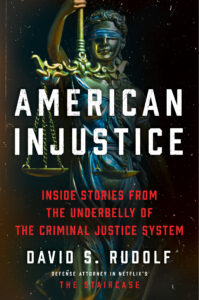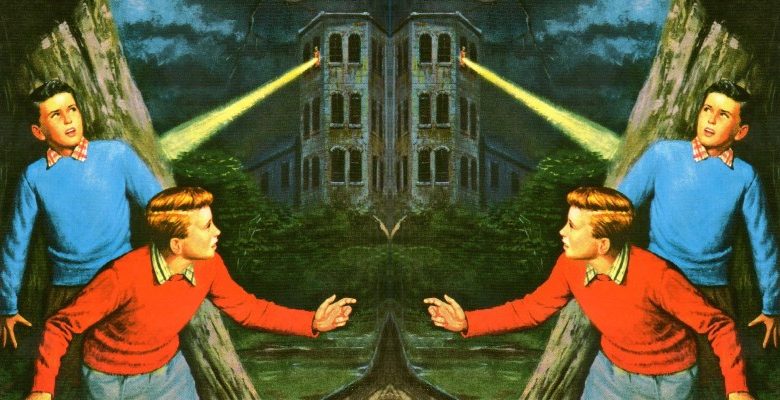[ad_1]
But constant experience shows us that every man invested with power is apt to abuse it, and to carry his authority as far as it will go.
—Charles-Louis de Secondat, Baron de Montesquieu
On the night of July 27, 1990, Ed Friedland came home from a long day at work to find his wife bound with handcuffs and viciously slain on the dining room floor. The couple’s ten-month-old adopted son, found in the nursery at the rear of the home, was unharmed but distraught after being left unattended for hours. Ed called 911 to report the murder. The police arrived minutes later and dutifully commenced their investigation into this unspeakable crime.

Even though Ed had no prior criminal record of any kind—in fact, he was a prominent physician—investigators soon began to focus on him as the killer. Every aspect of Ed’s life was turned inside out by the police. Despite a lack of evidence, and at first based solely on Ed’s demeanor and their intuition, they grew sure he had murdered his wife in cold blood. They just had to prove it—and that was what they set out to do. After an erratic and very public four-year investigation, Ed was indicted for first-degree murder. If convicted, he would face the death penalty.
Early in this process, which began with the murder and ended with Ed’s indictment, the police lost sight of their true role as investigators. They stopped trying to solve the crime and instead focused all their energies on proving the culpability of a single suspect—Ed Friedland. Once the police had made up their minds that Ed was responsible for his wife’s death, they misinterpreted facts and became blind to a mountain of evidence that pointed directly to another suspect: a longtime felon with a history of violence and drug use who lived nearby.
I represented Ed and defended him on the murder charge. During my investigation, I discovered that the police had not only chosen to ignore evidence that the murder had been committed by someone else, but they also hid this critical evidence from the prosecuting attorney. The police had become so entrenched in their theory that Ed was the killer, they seemed to be willing to do anything to have him prosecuted and convicted, even if it meant withholding information from the district attorney’s office. As is always the case, the officers who were involved in the murder investigation denied all wrongdoing and suffered no consequences for their actions.
Willfully concealing evidence of a defendant’s innocence is an egregious abuse of police power that comes with life-altering, and sometimes life-ending, consequences. Incredibly, this type of misconduct by law enforcement doesn’t just happen in rare and isolated cases. It is common knowledge among criminal defense attorneys that police and prosecutors routinely engage in a variety of abuses of power to obtain convictions, and it happens in every jurisdiction in the United States.
Such misconduct by police and prosecutors takes several forms. The first involves the police concealing evidence of the defendant’s innocence, as investigators did in the Ed Friedland case. Another common type of misconduct occurs when the police use highly suggestive procedures to make an eyewitness identification of a suspect more likely, which in turn has the effect of contaminating an eyewitness’s true recollection of the crime and the perpetrator. Yet another occurs when the police fabricate or plant evidence for the purpose of implicating a suspect in a crime. A related abuse of power occurs when the police use interrogation tactics that coerce innocent defendants into giving false confessions and encourage incentivized witnesses, such as “jailhouse snitches,” to give false testimony against an accused. Finally, in cases where forensic evidence exists and is relevant, investigators often resort to highly unreliable forensic disciplines, such as bite-mark and microscopic-hair-comparison analyses, to implicate suspects. Meanwhile, prosecutors routinely rely on unreliable evidence procured through police misconduct to obtain convictions or force plea deals with defendants.
Ironically, law enforcement misconduct is most often seen in cases in which there is a paucity of truly incriminating evidence—usually because the suspect in such cases is in fact innocent. Yet a strong belief by the police in their own ability to “know what really happened,” coupled with the effects of confirmation bias and a desire not to let the perpetrator beat the charge, lead investigators astray and result in abuses of power that send innocent people to prison. It’s not that the police set out to frame someone they know to be innocent, although that sometimes happens (if rarely). More often, the police feel the need to create or find the evidence necessary to convict where none exists. Those who work to correct injustices of this type have a name for it: noble-cause corruption.
Such abuses of power have resulted in the wrongful prosecutions of thousands of innocent people. Countless innocent people have likewise been imprisoned, and many have been sent to Death Row. Tragically, some of those sentenced to death were executed for crimes they likely did not commit. Racial minorities have disproportionately been the target and victims of police and prosecutor misconduct, particularly in the American South, where an enduring legacy of racial prejudice has long plagued the criminal justice system.
Just in the past thirty years, due in part to advancing scientific technologies, such as DNA testing, more than 2,800 innocent people serving prison sentences have been exonerated and freed from the shackles of confinement, their combined jail sentences adding up to more than 25,000 years of prison time. This number, however, represents only a small fraction of the number of persons wrongfully convicted over the same period, and it does not reflect those who were acquitted or granted a dismissal of the charges after being wrongfully arrested.
You would think that all the actors in the court system would happily work to correct erroneous convictions, but this has not proven to be the case. Prosecutors and judges have shown remarkable hostility to overturning convictions based on new evidence or evidence of misconduct by police or prosecutors, even when the new evidence includes reliable scientific data such as DNA comparisons that exclude the defendant as a perpetrator in the crime. Attorneys representing defendants who are challenging a conviction face steep uphill battles in winning exonerations, with the rare success often taking years and even decades to bring about. For each of the exonerees, there remain innumerable others still sitting in prison, praying for their day of justice to come. “It is better that ten guilty persons escape than that one innocent suffer”: so said the English jurist William Blackstone in the 1760s. In the name of “law and order,” however, police and prosecutors have turned this bedrock principle on its head.
As a criminal defense and civil rights attorney for more than forty years, I have spent my career fighting abuses of power in the criminal justice system whenever and wherever I found them. My work has been in America’s courtrooms, where the state’s mechanisms for the deprivation of liberty slowly grind, and where those responsible for wrongfully taking a person’s liberty are all too rarely held to account. I have worked in the trenches as a public defender in the South Bronx, representing the poorest of the poor, and conversely I have represented the very wealthy, including entrepreneurs, politicians, and professional athletes. I have seen how the system works and how it fails. I have been privileged during my career to represent people in some of the most compelling cases imaginable, and in every case I have vigorously contested abuses of power and championed the cause of individual liberty. This has been the touchstone of my life.
This book contains the extraordinary stories of real people who lived through shocking abuses of power at the hands of the criminal justice system. Some spent decades in prison before finally winning their release. Many of the cases are from North Carolina, where I have practiced law since 1978, but they could have happened anywhere, and they have. The same stories, and the same travesties of justice, exist in every state. These stories and the people whose lives have been affected will illuminate the hidden systemic ills of our criminal justice system for inspection by all, and will call attention to common abuses of power that sacrifice the rule of law for a conviction at any cost, even if the cost is the life of another human being. I have seen it firsthand, and I have the stories to prove it.
___________________________________
Excerpted from AMERICAN INJUSTICE by David S. Rudolph. Copyright © 2022 by David S. Rudolph. Reprinted by permission of Mariner Books, an imprint of HarperCollins LLC. All rights reserved.

[ad_2]






